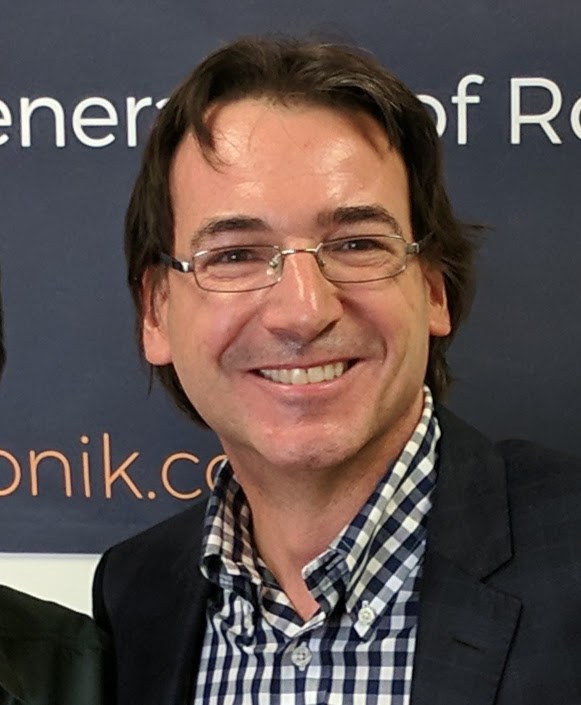Xerrada: Experimental Human-Centered Robotics, a càrrec de Luis Sentis
Luis Sentis is an Associate Professor in Aerospace Engineering at the University of Texas at Austin and co-founder of Apptronik Systems. He received Ph.D. and M.S. degrees in Electrical Engineering from Stanford University and was a La Caixa Foundation Fellow. His B.S. degree is from UPC's ETSETB. He worked in Silicon Valley in the high-tech sector leading R&D projects in clean room automation. In Austin, he leads the Human Centered Robotics Laboratory, an experimental facility focusing on control and embodiment of humanoid robots. He writes extensively and teaches courses in areas related to realtime control of human-centered robots, design of high performance humanoid robots, and safety protocols in robotics. He was awarded the NASA Elite Team Award for his contributions to NASA’s Johnson Space Center Software Robotics and Simulation Division. He has been a speaker in popular events such as SXSW and Hot Science - Cool Talks. Luis is co-chair for the ASTM International Standards Committee of Exoskeletons and Exosuits and serves as an advisor for the UT System Federal Office National Security Advisory Group.
- https://telecos.upc.edu/ca/esdeveniments/historic-anterior-2020/xerrada-experimental-human-centered-robotics-a-carrec-de-luis-sentis
- Xerrada: Experimental Human-Centered Robotics, a càrrec de Luis Sentis
- 2017-11-22T11:10:00+01:00
- 2017-11-22T13:10:00+01:00
- Luis Sentis is an Associate Professor in Aerospace Engineering at the University of Texas at Austin and co-founder of Apptronik Systems. He received Ph.D. and M.S. degrees in Electrical Engineering from Stanford University and was a La Caixa Foundation Fellow. His B.S. degree is from UPC's ETSETB. He worked in Silicon Valley in the high-tech sector leading R&D projects in clean room automation. In Austin, he leads the Human Centered Robotics Laboratory, an experimental facility focusing on control and embodiment of humanoid robots. He writes extensively and teaches courses in areas related to realtime control of human-centered robots, design of high performance humanoid robots, and safety protocols in robotics. He was awarded the NASA Elite Team Award for his contributions to NASA’s Johnson Space Center Software Robotics and Simulation Division. He has been a speaker in popular events such as SXSW and Hot Science - Cool Talks. Luis is co-chair for the ASTM International Standards Committee of Exoskeletons and Exosuits and serves as an advisor for the UT System Federal Office National Security Advisory Group.
22/11/2017 de 11:10 a 13:10 (Europe/Madrid / UTC100)
Aula de Teleensenyament - Edifici B3
Abstract:
As new embedded systems and machine design methods are devised, the number of actuators and sensors on robots steadily increases. These new generation of robots are required to blend around with humans, achieve tasks quickly, and guarantee safety. One question that arises is what computational control and planning schemes are needed for such high dimensional systems. In this talk, I will first discuss motion planning methods to achieve agile, robust and versatile locomotion capabilities. In particular, I will discuss methods based on robustly tracking a set of non-periodic keyframe states. Formulating the invariance properties and distance metrics of phase-space planners I will describe how to achieve robust dynamic locomotion under external disturbances. I will then discuss the implementation of these approaches into highly dynamic biped robots and describe experimentation procedures to walk without supports. I will proceed to describe challenges on the design of high performance series elastic actuators. These type of actuators are ideal for human-robot interaction due to their passive compliant properties. I will present the design of the UT-SEA and how my laboratory leveraged it to design the NASA Valkyrie humanoid robot. Finally, I will discuss our activities on commercializing high-performance actuators and humanoid robots for the aerospace and service branches under the umbrella of Apptronik Systems Inc.

Comparteix: